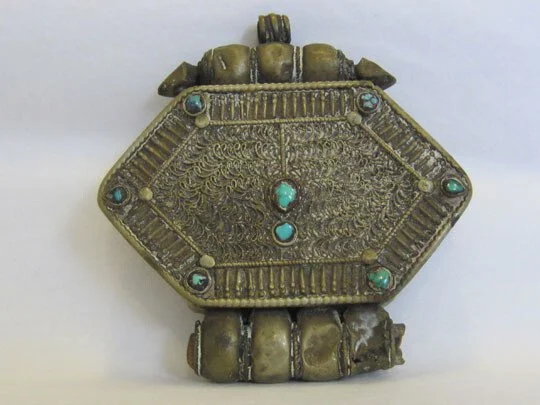From colonial Burma to Brighton: The story of the collection
Colonel James Henry Green assembled a pre-eminent collection of textiles, and photographs from Burma in the 1920s and 30s whilst serving in the Burma Rifles. Green’s military role involved assessing local people for their potential to serve in the British colonial army. Based in the northern hill states of Burma, Green was fascinated by the ethnic diversity he witnessed and used photography as a way of recording the people and places he encountered.
Green situated his work in the context of the broader intellectual climate of the time, and his dissertation at the University of Cambridge in 1934 is indicative of the scholarly approach he took towards the study of Burma. Green’s documentation of life in Kachin State in northern Burma/Myanmar constitutes a rare if not unique visual record of life in this area in the early 20th century. Alongside the photographs he took, Green and his wife Dorothy also collected 230 textile pieces and objects, which form the basis of the Green Collection.
Founding the Trust
Following Colonel Green’s death in 1975, a Trust was founded by Dorothy Green in 1977 under the name ’The Burma Rifles Charitable Trust‘, with a founding purpose to ’advance the education of the public by establishing and maintaining a public museum or place for the storing and exhibition of articles, papers, books and pictures relating to the history, races, languages, customs and religious beliefs of Burma‘. At this time, the objects were on display at the Green’s home in Surrey, with the intention of enabling visitors to learn about Burma and its people.
Setting up a museum with the sole purpose of housing the collection proved an impractical challenge, and in 1992 the Trust chose Brighton Museum & Art Gallery (now part of the Royal Pavilion and Museums Trust) to be the long-term caretaker of the collection. A deed of amendment was made in 1993 to give the Trust its current name.
The financial gift bequeathed to the Trust by Dorothy Green has, since 1992, been used to support the care for and access to the Green Collection in the context of the Museum’s World Art Collection, providing support for curation, and for wider research, education and outreach activities.



